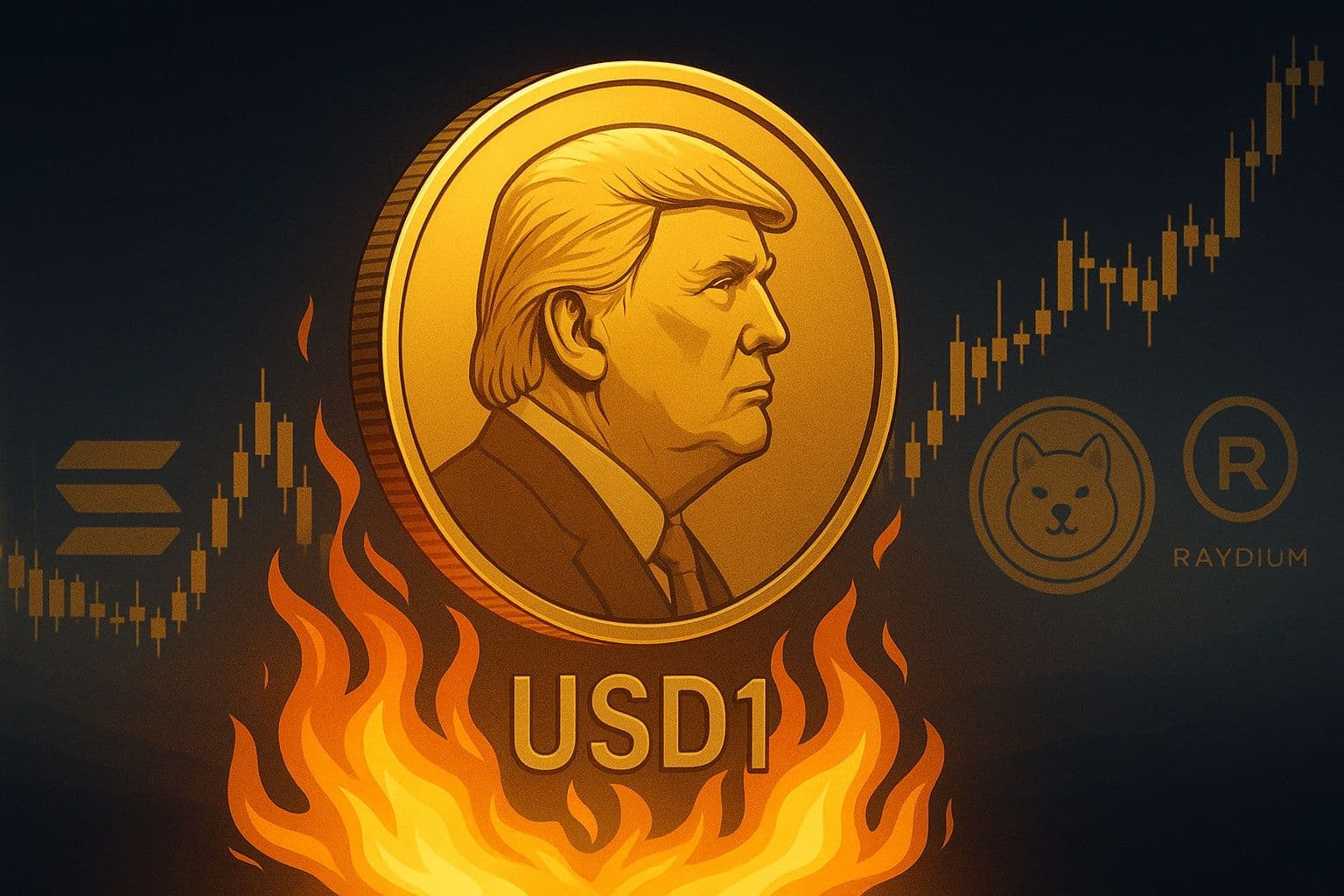World Liberty Financial, the entity behind the USD1 stablecoin reportedly backed by Donald Trump, has announced its expansion to the Solana blockchain. This strategic move involves key partnerships with BONK, Solana's largest memecoin community, and Raydium, a leading decentralized exchange. The integration aims to accelerate adoption for USD1 by tapping into Solana’s high-speed, low-cost environment, which has seen a surge in user activity and transaction volume this year.
Stablecoins are critical for DeFi, payments, and trading on any blockchain, acting as a bridge between traditional finance and the crypto ecosystem. For USD1, launching on Solana provides access to a vibrant user base and established liquidity venues. This expansion is seen as a direct attempt to embed the politically branded stablecoin within one of crypto's most active networks, setting the stage for a competitive battle in its stablecoin market.
Background and Context
Launched earlier in 2025, USD1 has positioned itself as a pro-innovation, politically aligned alternative to established stablecoins like USDC and USDT. Backed by World Liberty Financial (WLFI), the project emphasizes its connection to a political movement, a unique branding strategy in the stablecoin sector. This approach has contributed to its rapid growth, with its circulating supply reaching nearly $3 billion in approximately seven months, according to industry reports. Unlike competitors who often highlight their regulatory compliance and institutional partnerships, USD1’s public positioning leans heavily on its brand identity.
Details of the Solana Expansion
The expansion into the Solana ecosystem is centered on two primary integrations designed for maximum user exposure and liquidity.
First, a partnership with BONK aims to introduce USD1 to a massive and highly engaged community. The collaboration will reportedly feature launch initiatives and community incentives to drive awareness and use. Second, an integration with the Raydium decentralized exchange will establish deep liquidity for USD1. This move ensures the stablecoin is immediately usable in trading pairs and liquidity pools, which is essential for any asset seeking to gain traction in DeFi. Industry reports suggest the rollout includes multi-million dollar incentive pools to attract liquidity providers and early adopters.
Quotes From Coverage and Industry Reactions
The expansion has drawn significant media attention. According to AMB Crypto, USD1’s growth to a $2.9 billion supply within seven months marks it as “one of the most aggressively scaled stablecoin projects of the year.” In its analysis, 99Bitcoins described the move as an attempt “to establish USD1 as Solana’s go-to stablecoin” by leveraging the powerful distribution channels of BONK and Raydium.
Analysts note that this is a direct challenge to the current market leader.
The stablecoin market on Solana is heavily dominated by Circle's USDC, which holds over $9 billion of the network's total stablecoin supply. While some researchers question whether a politically branded stablecoin can unseat a deeply integrated incumbent like USDC, others believe the strong community alignment with BONK could carve out a significant niche.
Why Solana Matters For This Expansion
Solana has cemented its position as a top destination for high-frequency trading, payments, and memecoin activity, largely due to its high throughput and minimal transaction fees. For a stablecoin focused on rapid scaling, this environment is ideal. Integrating with the BONK and Raydium ecosystems provides USD1 with immediate access to a proven market, bypassing the slow process of building a user base from scratch. Recent network data shows Solana consistently processing a high volume of daily transactions, making it fertile ground for a new stablecoin to grow.
Potential Impact on Stablecoin Competition
By entering the Solana ecosystem, USD1 places itself in direct competition with USDC. The success of this expansion will depend on whether its incentive programs and community-focused strategy can persuade users and developers to switch from a well-established and trusted asset. The political branding of USD1 is a double-edged sword; it may attract a loyal user base while potentially deterring others who prefer politically neutral financial tools. This move also raises the general question of how politically affiliated digital assets will navigate the evolving regulatory landscape.
What to Watch Moving Forward
The market will closely monitor several key indicators to gauge the success of USD1 on Solana. These include the speed at which it accumulates liquidity on Raydium, the volume of trading activity it generates, and whether the initial incentive programs attract long-term users or just short-term capital. Furthermore, the transparency of USD1's reserves and the governance structure of World Liberty Financial will remain critical points of scrutiny for both users and regulators. The outcome will offer valuable insights into the competitive dynamics between established stablecoins and new, narrative-driven challengers.


Comments